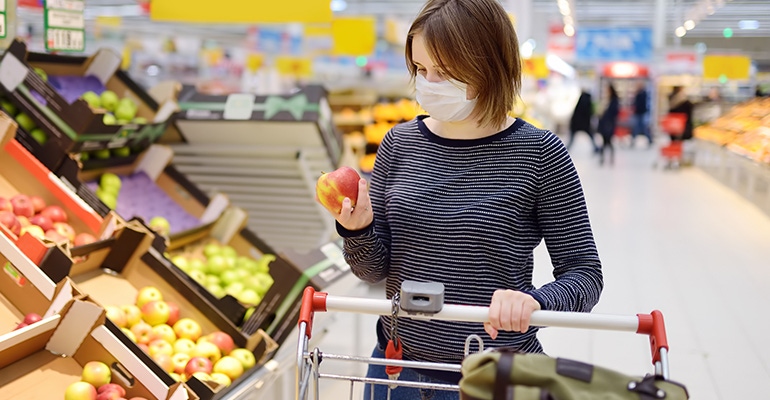A new survey finds that U.S. consumers plan on spending 25% less on food and 36% less on gifts this year compared to 2019.
December 18, 2020

Dunnhumby has released findings from the sixth wave of its Consumer Pulse Survey, a study of the impact of COVID-19 on customer behavior and attitudes across 21 countries. The dunnhumby Consumer Pulse Survey found that U.S. consumers plan on spending 25% less on food and 36% less on gifts this year, compared to 2019. Ten percent reported they would not be buying any gifts. This pullback in spending is occurring at the same time as consumers are increasingly worried about the virus, the economy, their personal finances and the rising cost of food.
Americans are at the highest level of worry about the virus (32%) since the crisis began and the sixth highest country globally. The Dunnhumby Worry Index score increased from a study low of 24% in September (Wave 5) and May (Wave 3) and jumped 8 percentile points in November, coinciding with the latest escalation of the pandemic. The “Dunnhumby Worry Index” is a measure of how concerned consumers are about COVID-19.
“Worry is back with a vengeance as consumers are being hit with multiple intersecting crises, at a time typically spent gathering with family and friends. And, the majority of consumers report that both their personal finances and the country’s economy are in poor shape while they are being hit by rising food prices,” said Grant Steadman, president of North America for Dunnhumby. “To best meet consumer needs through the holidays and into the New Year, retailers should focus on offering good value and base prices, with solid, in-store safety measures, fast checkouts and deliver a positive, personalized online shopping experience.”
Key findings from the study:
One-third of all holiday food shopping will take place online, a continuation of the adoption of grocery e-commerce beginning at the start of the pandemic. Sixty-seven percent of consumers plan to buy their Christmas food in-store, while the remaining third of consumers plan to buy their food online (67%), at restaurants (28%) and at other destinations (17%). The use of online is seen even more prominently for gift buying with 44% saying they will buy more gifts online than last year. Personal concerns (47%) about COVID-19 are most often cited as the main issue impacting holiday planning, followed by personal finances (44%).
The economic pressures noted by consumers in the last Wave in September have continued to grow with 54% reporting their finances are in poor shape compared to 49% in September and 45% in March. Seventy percent of those surveyed also felt the country’s economy is weak. As a result, shoppers continue to seek value through lower prices and or promotions. Forty-two percent of shoppers said they are spending more on food.
Faith in the U.S. government’s ability to deal with COVID-19 is at an all-time low (18%), dropping 19 points since the start of the pandemic, and one of the three lowest worldwide. Trust in stores dropped 10 points since March, with only 47% of consumers reporting that stores are doing a good job dealing with the pandemic.
Despite increased worry, fewer people in the U.S. are willing to take actions to combat the virus. From September, there was a slight decline in respondents regularly wearing masks and washing hands. Social distancing is on the rise, with nearly 70% practicing social distancing. In addition, 74% percent of U.S. consumers are very pessimistic about restrictions, an increase of 11 points from September and the fifth highest in the world. Perhaps most notably, only 40% of consumers back restaurant and bars closings, compared to 69% approving of closures back in March.
With the resurgence of COVID-19 during Wave 6 of the study, consumers are once again cutting back on shopping trips. The number of weekly shopping trips is down to 4.6, lower than levels seen in April. Online shopping accounts for 29% of the weekly trips. The U.S. finds itself roughly in line with the global average (27%) for online shopping. After a steady decline in previous Waves, 25% of shoppers surveyed are increasingly worried about safety while shopping.
Source: Dunnhumby
You May Also Like


